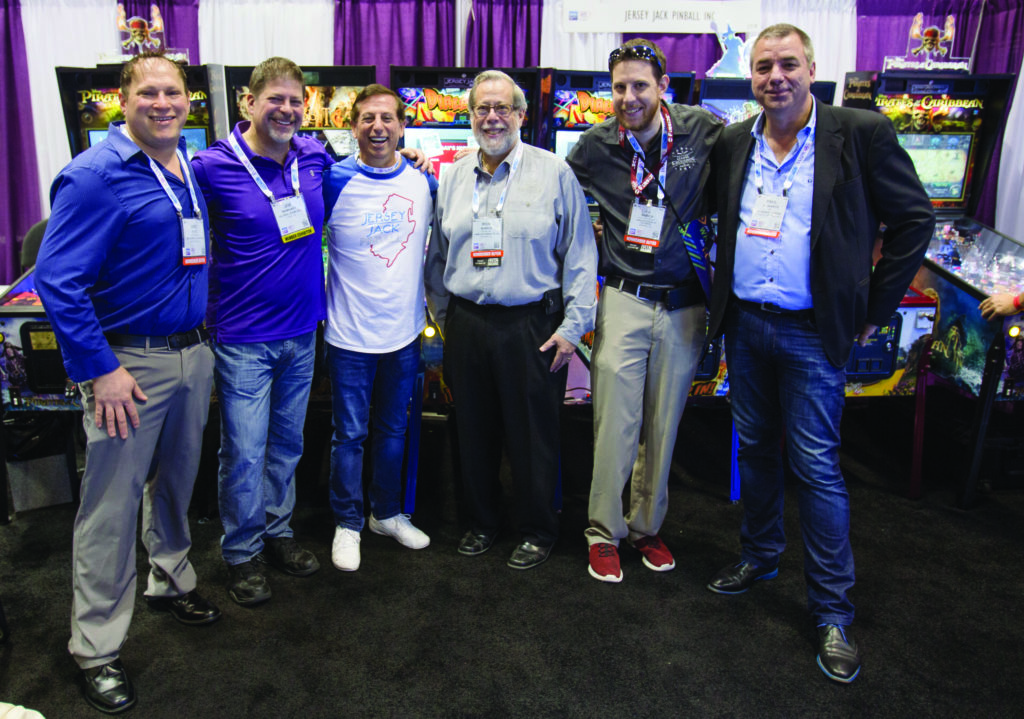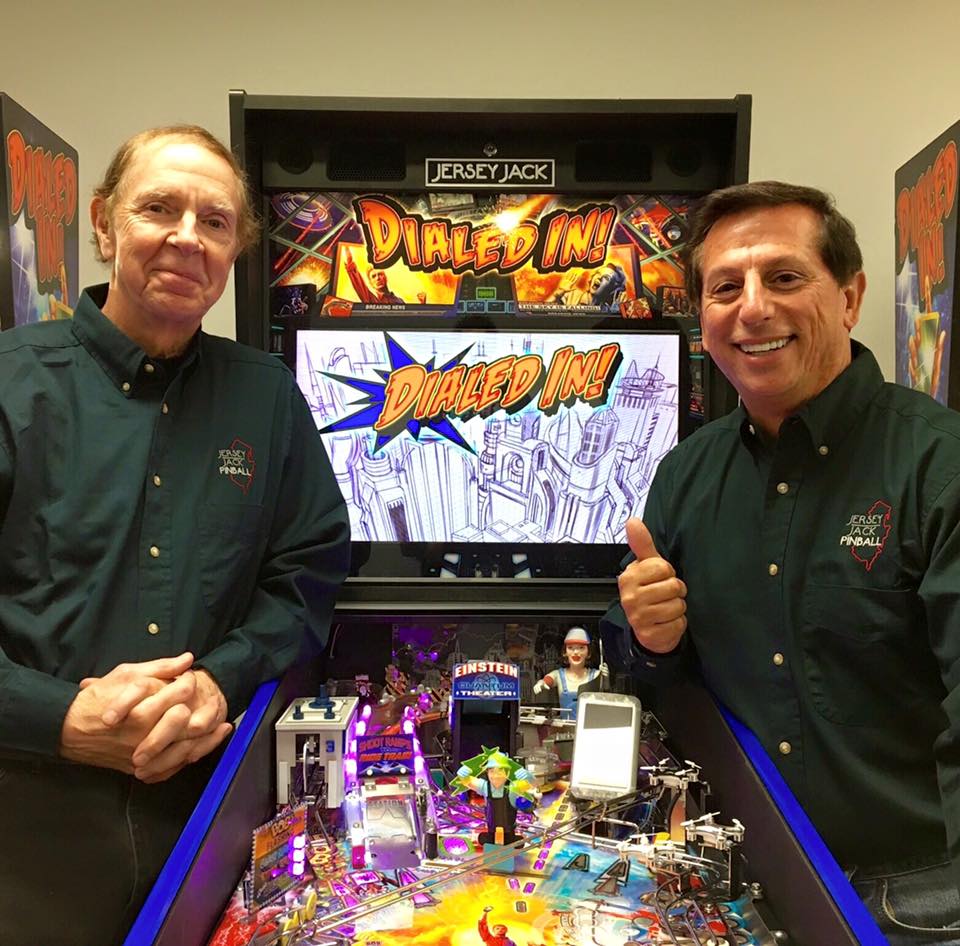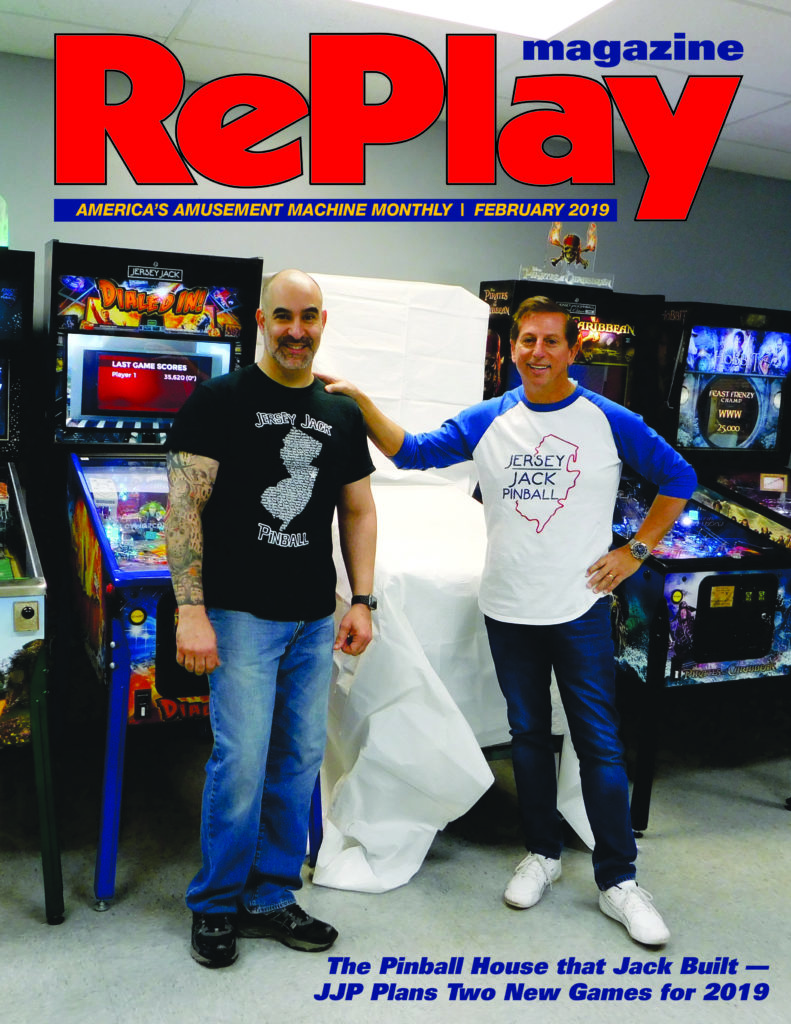Eight Years Following a Big Leap
In 2011, Jersey Jack Pinball Dove into a Shrinking Market and, In Part, Helped Revitalize It Into Today’s Millennial-Adored, Hot “New Thing”
by Casey Minter
The world of pinball looked a lot different back in January 2011 when Jack Guarnieri decided to take a leap of faith.
Stern stood as the lone survivor of pinball manufacturers, with Gottlieb and Williams long gone and the remnants of Bally/Midway smoldering in bankruptcy court. Chicago Gaming Company was two years away from releasing its first remake, Heighway Pinball had yet to even begin its short lifespan and newcomers like American, Spooky, Dutch and Multimorphic were still simple ideas germinating in the minds of entrepreneurial pinheads.
Flagging attendance at the three major pinball-focused expos in 2011 contrast with today’s raucous crowds and the explosion of new events. The International Flipper Pinball Association held 772 events in 2011, compared to the over 5,000 it held in 2018.
Was the resurgence in pinball because the efforts of Gary Stern to keep the flame alive finally got traction? Was it a change in player tastes? Was it the palpable passion that was the driving force behind Jack Guarnieri taking on such a massive undertaking? Or, was it all of that and some sort of cosmic confluence?
“Looking back, I was pretty naïve, even though I was coming in with years of industry experience,” Guarnieri said. “I just decided to focus on the games. I believed having more than one company making pins would be good for pinball in general. It would get more people talking about pinball, more people playing.”
In 2011, Guarnieri brought his decades of experience as a pin tech, operator and distributor to the table in the form of Jersey Jack Pinball. The new company, funded in part by a stable of satisfied customers Guarnieri had built over the years, hit the ground running with an iconic license the world would instantly recognize: The Wizard of Oz. The game, which is still Guarnieri’s favorite creation, came out in 2013 and melded the deep, skilled play of classic pins with radical new uses of modern technology. Picking the license was calculated, as the film was about to celebrate its 75th anniversary and Guarnieri also thought a license centered around a female protagonist (which is rare in pin history) could bring in a new crowd of players.
“My hope was that we could make great games that introduced new technology and new innovations, but I also wanted to expand the player base,” Guarnieri said. “Licensing Wizard of Oz was that idea in motion, a classic movie that has definitely brought more women and girls into pinball.”

As with any manufacturing process, things started a little rough around the edges. Guarnieri’s history as a pinball tech and the talented team of engineers and designers he brought on board eliminated a lot of the potential missteps a first-time game maker may make, but time has only helped the team refine their craft.
After Wizard, JJP set foot on a grueling path that seemed to parallel the hardships of their next machine’s characters: The Hobbit. It turns out making pinball machines is a complicated process, and involving massive movie studios in that process doesn’t speed things up. After months of delays, with many operators and home owners alike beginning to irritate, the new machine came out in March 2016.
“Actually doing what you say you’re going to do has a lot of value in building pins. We get so used to people making promises for things then forgetting the promise. The most important promise I make is to build a really great product, and with Hobbit I licensed something that was in development,” Guarnieri said.
The pin was set to release alongside the third film in the trilogy, but as the film released, JJP got the chance to see the remainder of the licensed assets and gained access to a pivotal character, Smaug the dragon, that they hadn’t been able to use in previous prototypes. Guarnieri made the call to hold off the game’s release, and the team went back to the drawing board with delivery dates for hundreds of pre-orders getting later each day.
“I knew we would have a better product if we delayed, so we stopped, backed up and changed all these things. I felt that I could just jump through this window and when I got through the glass, I’d learn how to fly. And it wasn’t good,” Guarnieri said. “It hurt a lot –– even talking about it hurts –– but in the long run, I know it left our customers believing in what we do. That’s the entrepreneurial side of me, this person that defies logic all the time and just does it.”
The end result was a redefining moment in pinball. Guarnieri claims that no pinball had ever packed more content in a table (just look at its rule sheet!); the game’s LCD monitor offering a smorgasbord of quests, characters, monsters, modes and guidance. Since its release, the game has been met with high praise, and JJP continues to update its code, their latest released last November.

With renewed ambition and two successful games under their belts, the JJP team was just getting started. Within a year they were readying to release their third title, this time an original concept designed by revered designer Pat Lawlor. JJP defied the convention that had held for a decade that all pinballs must be licensed to attract the uninterested masses by building Dialed In!
“People tend to think it is less expensive to build a pin around an original idea. In reality, it’s probably more expensive. You have a big, blank white slate, you have to develop all the artwork, all the assets, the story, the sounds, everything,” Guarnieri said.
Looking at the over-saturated world we lived in, and noticing the sensory overload especially in arcades and FECs, Guarnieri decided to put “not just the kitchen sink but the whole plumbing department” in the game. The process further refined the company’s expertise, and Guarnieri set his sights on the next project: The Pirates of the Caribbean. JJP’s success with Dialed In! left them wanting for more original IP, though, and Guarnieri said the company will definitely release another original concept in the future.
Pirates released in October of 2017, solidifying confidence in the budding company’s production goals. Looking forward, Guarnieri’s ambition resists tempering with JJP set to release two brand-new pingames in 2019. One is set to release in the spring, the other in the fall, and both are based on well-known licenses, he said.
Through it all, JJP has benefited from the growth that they helped encourage by joining the fray in 2011. Home and route sales have jumped since they joined pinball-making, but the company has always had a good focus on the operator market. Guarnieri himself has spent as many countless, frustrating hours servicing stubborn pins as most grey-haired techs, and strives to create games that can stand up to the abuse of street play. Additionally, the machines are all built in America, and meant to last as long as their predecessors from the ’80s and ’90s (many of which are still playing side-by-side with the latest JJP pins).
“Home sales are great, but home sales come from customers playing games in locations. They go out and see the games in your locations, play them, love them and then decide they want to buy them,” Guarnieri said. “We could design the coolest of cool machines, but if it doesn’t work consistently on-location, it’s worthless.”
Alongside the growing popularity of pinball machines, Guarnieri has benefitted from a growing interest in out-of-home entertainment. He believes every FEC and arcade, even those focused on redemption, can benefit from a row of pinball machines. Though he celebrates the tactile and fun-focused gameplay of pins by themselves, Guarnieri also highlights that many of JJP’s tables can come ticket-ready for “pindemption.”
“Pins should be a component of every amusement center. You have to have some variety. You can’t have everything be a ticket or prize game,” he said.
Through it all, Guarnieri credits the loyalty of his employees and buyers, saying without them his dream could never have been realized. He highlighted Larry Appice, now his director of manufacturing, as a rock within the company, someone who has helped build it since day one.
“There are a lot of others that have been with me for a long time, but I think everyone here shares the credit equally in a way. From people working on the assembly line to our designers, programmers and engineers,” Guarnieri concluded. “It’s a really good group of people dedicated to bringing more fun to the world. We get so many letters and emails from fans and customers around the world, telling us how much fun they have playing. Simply put, that’s why we do it.”
For more information, visit www. jerseyjack pinball.com and be sure to keep an eye out in the coming months for the company’s new release.


2 Comments
Pingback: THIS WEEK IN PINBALL: February 4th, 2019 - This Week in Pinball
Pingback: THIS WEEK IN PINBALL: February 18th, 2019 - This Week in Pinball